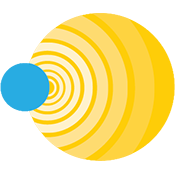Status Update of the Breakthrough Listen - TESS - SETI Survey of Exoplanet Host stars
Now in the eleventh month of observations of exoplanet host stars identified by TESS, Breakthrough Listen continues to collect data from the Green Bank Telescope (GBT) and Parkes Telescope in search for technosignatures. Using exoplanet candidate lists provided by the TESS Team at Massachusetts Institute of Technology (MIT), we have plans to observe all TESS-identified planets in the northern celestial sphere from 1-12 GHz with the GBT, and southern targets with Parkes with their newly available Ultra-Wide Band receiver with simultaneous frequency converge from 0.7-3.8 GHz.
In July 2020, as the TESS mission ended its two-year primary survey, one year centered on the southern ecliptic pole, and the second year centered on the northern, TESS started its extended mission by re-observing the southern sky. At the same time, Breakthrough Listen summer intern Piper Stacey was simulating transiting megastructures and how they might look in TESS data. Analyses such as these are focused on modeling non-circular shapes that are distinctly different from the round shape of transiting exoplanets and they set the stage for searching TESS’s optical lightcurves for technosignatures.
Radio SETI observations of TESS identified exoplanets are ongoing and we now have 585 30-minute cadence observations at Parkes and 1464 observations from GBT with several receivers between 1 and 12 GHz. The GBT observations include 97 exoplanet host stars that have been observed across that entire frequency range. Analysis of these observations with TurboSETI is ongoing with first results coming soon. Summer intern Raffy Traas worked hard to get the initial SETI analysis of these targets from the GBT setup in the Google cloud, laying the groundwork for easier reproducibility and expansion of the code used for detecting narrowband signals.
The SETI w/ TESS Collaboration continues to share ideas about prioritization of TESS-identified planet candidates, and we are currently formalizing a SETI prioritization schema. Stay tuned for more information on TESS-SETI developments.
If you have any questions or would like to join our SETI with TESS monthly meetings, please contact me at hisaacson@berkeley.edu.
Number of observations at each telescope:
GBT
Number of observations at each telescope
GBT: 944 targets in the database
L-band: 149
S-band: 448
C-band: 464
X-band: 403
LSCX-band: 97
Parkes: 679 in the database
UWL(0.7 to 3.8 GHz): 585
(image from: https://www.nasa.gov/image-feature/goddard/2020/nasa-s-tess-creates-a-cosmic-vista-of-the-northern-sky)
